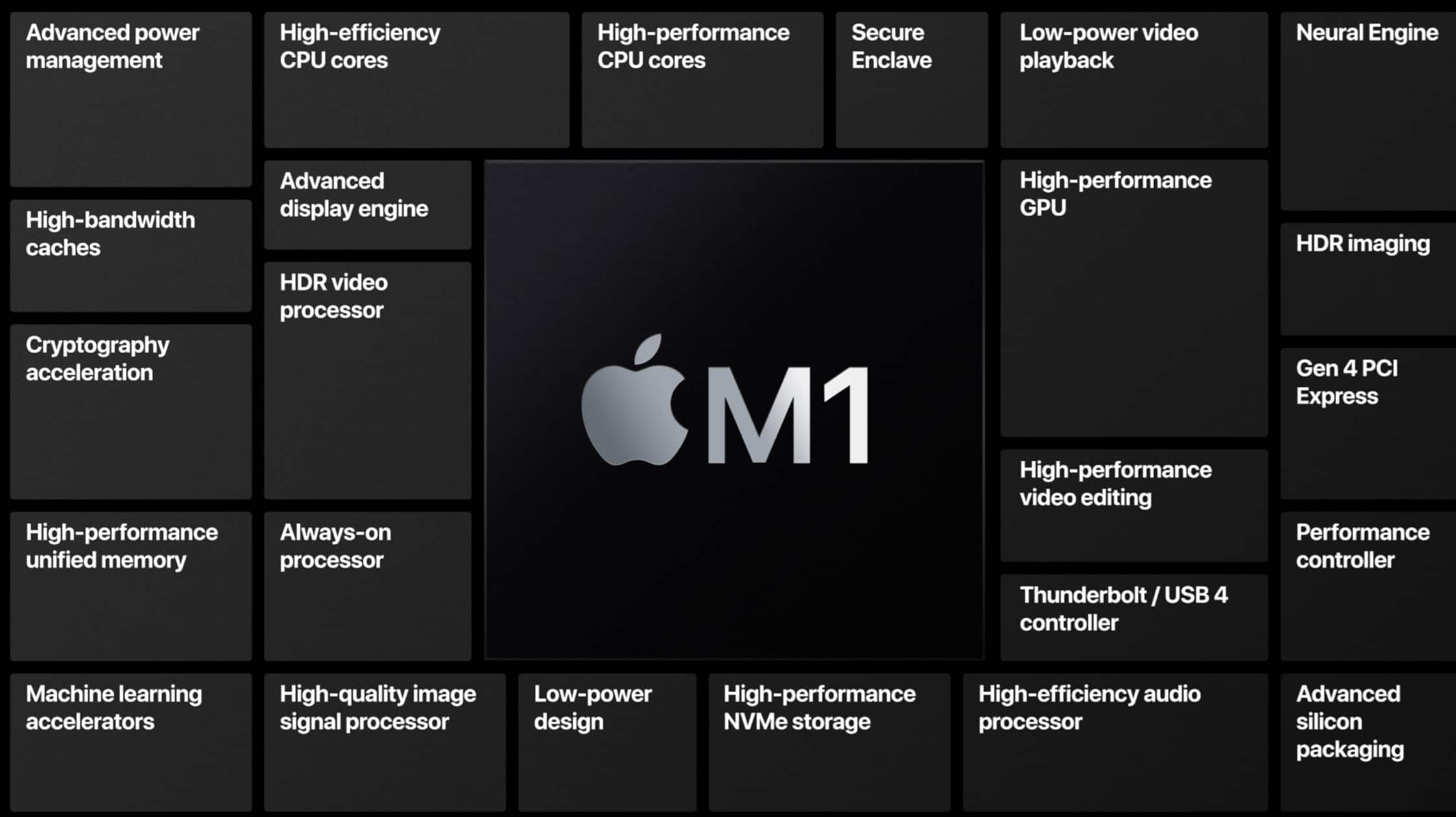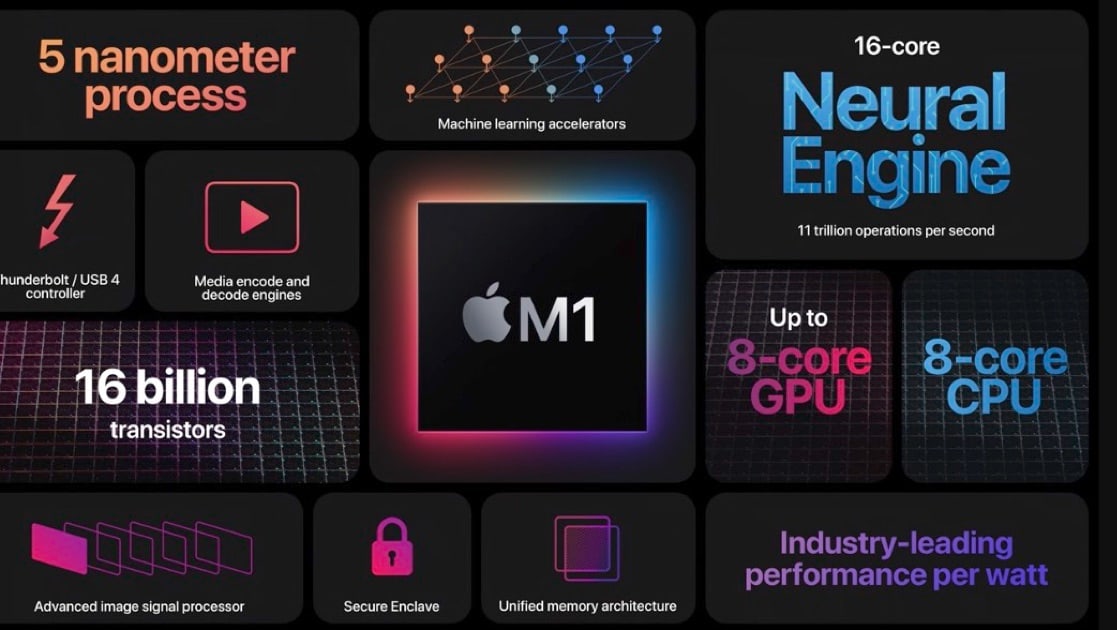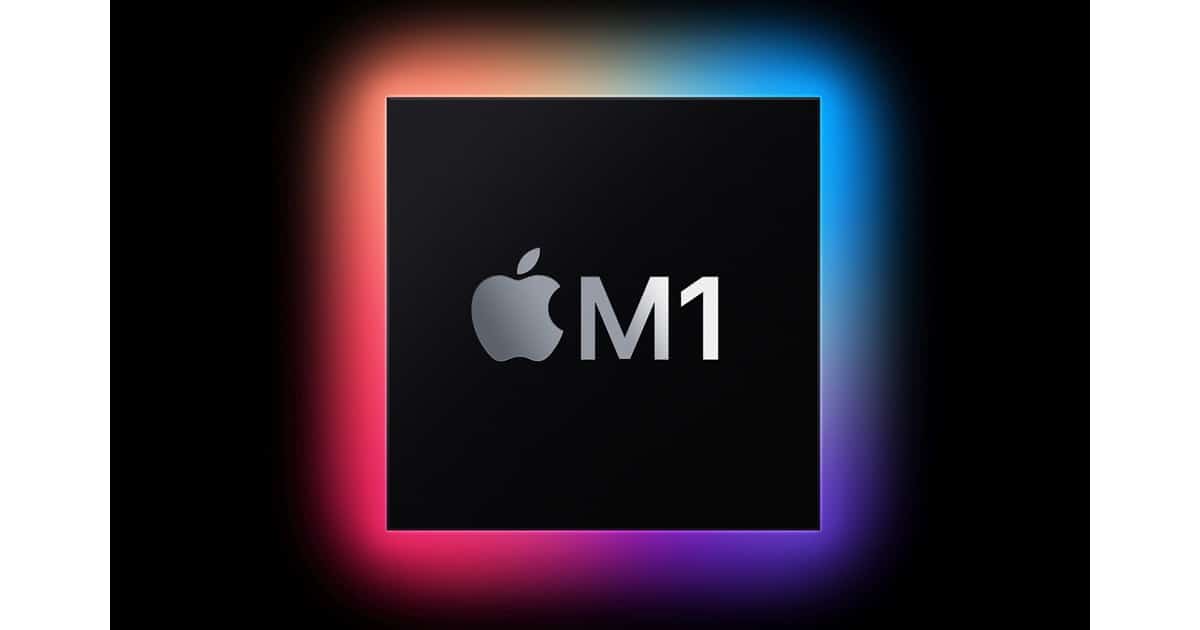No, not the highway north out of London.
Rather, M1 is Apple’s name for its SoC chip specifically designed for the Mac.
M1 is optimized for Mac systems in which small size and power efficiency are critically important. As a system on a chip (SoC), M1 combines numerous powerful technologies into a single chip, and features a unified memory architecture for dramatically improved performance and efficiency.
Some specs are in order.
- 5 nanometer process
- 16 billion transistors
- 4 high-performance and 4 high-efficiency CPU cores
- Up to 8 GPU cores capable of almost 25,000 threads
- 2.6 teraflops of graphics throughput
- Twice the CPU performance of a comparable Intel CPU at 25% of the power consumption. As a result, MacBook Pro battery life is just about doubled to 20 hours.

This is a seriously impressive Soc that integrates all the previously discrete chips onto one SoC.
- CPU
- GPU
- Thunderbolt 4 controller
- I/O controller
- T2 & Secure Enclave
There is also what Apple calls a unified memory architecture.
[The] M1 also features a unified memory architecture that brings together high-bandwidth, low-latency memory into a single pool within a custom package. This allows all of the technologies in the SoC to access the same data without copying it between multiple pools of memory, further improving performance and efficiency.

Discussion
It seems to me that Intel was holding Apple back. Clearly, with the M1, Apple was able to pull every modern technology it desired into a single SoC: 5 nm process, integrated system chips, unified memory architecture, video HDR, Wi-Fi 6, Thunderbolt 4, and very high performance integrated graphics. Intel couldn’t do that for Apple.
Key here is the low power design which allows, for example, the MacBook Air to go fanless and roughly double the battery life of the MacBooks.
The M1 performance/watt and resulting Mac pricing are very impressive, and it’s clear now why Apple decided to go with this architecture for the Mac.

Need more information, otherwise this feels like repeating mistakes of the PPC again. Virtualization, RAM limits, CPU limits, 3rd party graphic cards. I hope this scales and the 16 in MacBook Pro has 2 or 4x M1s and up to 128 MB of RAM with optional 3rd party graphics. Mac Pro no clue, not sure how M1 compares to Xeon
John:
Impressive, indeed. The M1 moniker no doubt garnered a few chuckles in the UK, and from anyone else who has travelled between LHR and London by road. One can already anticipate the memes from military buffs if and when the M chip gets to the 16th iteration.
If these M1 chipsets perform as advertised, and as their cousins operating in the wild on Apple’s other devices suggest, especially in the iPads that run similar apps to the Mac, then the industry may be about to undergo a pan-platform paradigm shift. The selection pressure from market forces alone, not to mention other key performance and security metrics, will be telling and merciless.
Although I immediately pulled the trigger on a MBA for my wife, I’m standing down on any further Mac purchase until Apple release further upgrades, notably those next gen iMacs. They’re going to run circles around anything Intel in their weight class.
Should be pretty cool with Rosetta 2 and running iPad and iPhone apps
iPads and iPhones are able to achieve excellent performance on less RAM than Android systems because of more efficient use of memory and the system being optimized because it’s all Apple.
I wonder if the same will be true of the M1 Macs? Maybe 8 GB on the M1 Macs will perform better than 8GB on similar Intel Systems.
Thoughts?
For me, unhappy with 16GB max memory in both Air and Mini.
I just bought a new Intel-based iMac (to replace my 2014 iMac) and put 64GB in it as I think that is the right amount if you want to get 5+ years from your hardware. And, it was cheap at $270 USD.